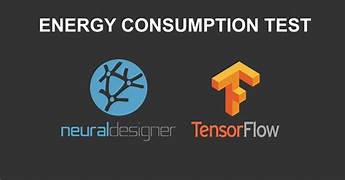The Use of AI in Improving Energy Consumption Patterns
As global energy demands continue to rise, the need for sustainable and efficient energy consumption solutions has never been more urgent. Artificial Intelligence (AI) is emerging as a transformative tool in addressing these challenges. By analyzing vast amounts of data, optimizing systems, and enabling smarter decision-making, AI holds the potential to revolutionize energy consumption patterns and contribute to a more sustainable future.
1. AI in Energy Management: An Overview
AI is being integrated into various aspects of energy systems to enhance efficiency and reduce waste. Key areas of application include:
- Smart Grids: AI helps manage energy distribution by predicting demand, identifying faults, and optimizing energy flow.
- Energy Monitoring: AI-powered systems track and analyze energy usage in real-time, enabling users to identify inefficiencies.
- Renewable Energy Integration: AI optimizes the use of renewable energy sources, balancing supply and demand.
- Building Automation: Smart systems use AI to control lighting, heating, and cooling, reducing energy waste.
These applications demonstrate AI’s ability to make energy systems more intelligent and adaptive, paving the way for significant improvements in consumption patterns.
2. Enhancing Energy Efficiency with AI
AI plays a crucial role in identifying and addressing inefficiencies in energy systems:
1. Predictive Analytics: By analyzing historical data and real-time inputs, AI can predict energy demand and optimize supply, reducing overproduction and wastage.
2. Fault Detection: AI algorithms can detect anomalies in energy systems, such as equipment failures or leaks, enabling timely maintenance and minimizing losses.
3. Load Balancing: AI ensures balanced energy distribution across networks, preventing overloads and improving system reliability.
4. Energy Storage Optimization: AI enhances the management of energy storage systems, such as batteries, by predicting usage patterns and optimizing charging cycles.
3. AI and Renewable Energy Integration
The transition to renewable energy sources presents unique challenges, including variability and unpredictability. AI addresses these issues by:
1. Weather Forecasting: Advanced AI models predict weather patterns, optimizing the generation of solar and wind energy.
2. Grid Stability: AI helps maintain grid stability by balancing the intermittent nature of renewables with other energy sources.
3. Resource Allocation: AI allocates renewable energy resources efficiently, prioritizing areas with higher demand or limited supply.
These capabilities enable more effective integration of renewables into existing energy systems, reducing reliance on fossil fuels.
4. Smart Cities and AI-Driven Energy Solutions
AI is a cornerstone of smart city initiatives, driving innovative energy solutions:
1. Intelligent Transportation Systems: AI optimizes traffic flow and public transport, reducing fuel consumption and emissions.
2. Smart Buildings: AI-powered systems regulate energy usage in buildings, adjusting settings based on occupancy and external conditions.
3. Distributed Energy Resources: AI facilitates the integration of decentralized energy sources, such as rooftop solar panels, into the grid.
These applications not only improve energy efficiency but also enhance the quality of urban living.
5. Challenges in Implementing AI for Energy Management
Despite its potential, the use of AI in energy management faces several challenges:
1. Data Availability: AI systems require vast amounts of high-quality data, which may not always be accessible or standardized.
2. Infrastructure Costs: The deployment of AI technologies often involves significant upfront investments in infrastructure and training.
3. Cybersecurity Risks: As energy systems become more interconnected, they are increasingly vulnerable to cyberattacks, necessitating robust security measures.
4. Regulatory Barriers: Compliance with diverse regulations across regions can hinder the adoption of AI-driven energy solutions.
Addressing these challenges is essential to fully realize the benefits of AI in energy management.
6. Future Trends and Innovations
The future of AI in energy consumption patterns holds exciting possibilities:
1. AI-Driven Microgrids: Localized energy grids powered by AI will enable communities to generate, store, and manage their energy efficiently.
2. Advanced Energy Forecasting: Improved AI models will provide more accurate predictions of energy demand and renewable energy generation.
3. Autonomous Energy Systems: AI will enable fully automated energy systems that self-optimize and adapt to changing conditions in real-time.
4. Behavioral Insights: AI will analyze user behavior to encourage more sustainable energy consumption habits through personalized recommendations.
7. The Path Forward
To maximize the potential of AI in improving energy consumption patterns, stakeholders must collaborate across sectors. Key steps include:
1. Research and Development: Investing in AI research to develop innovative solutions tailored to energy challenges.
2. Policy Support: Implementing supportive policies and incentives to encourage the adoption of AI-driven energy technologies.
3. Public Awareness: Educating individuals and organizations about the benefits of AI in energy management to drive adoption.
4. Global Collaboration: Sharing knowledge and best practices internationally to accelerate progress and ensure equitable access to AI technologies.
Conclusion
The use of AI in improving energy consumption patterns represents a transformative step toward a more sustainable future. By enhancing efficiency, optimizing renewable energy use, and enabling smarter systems, AI offers powerful tools to address the challenges of rising energy demands and climate change. However, realizing this potential requires overcoming implementation barriers and fostering collaboration among stakeholders. With the right approach, AI can pave the way for a greener, more efficient energy landscape that benefits both people and the planet.


